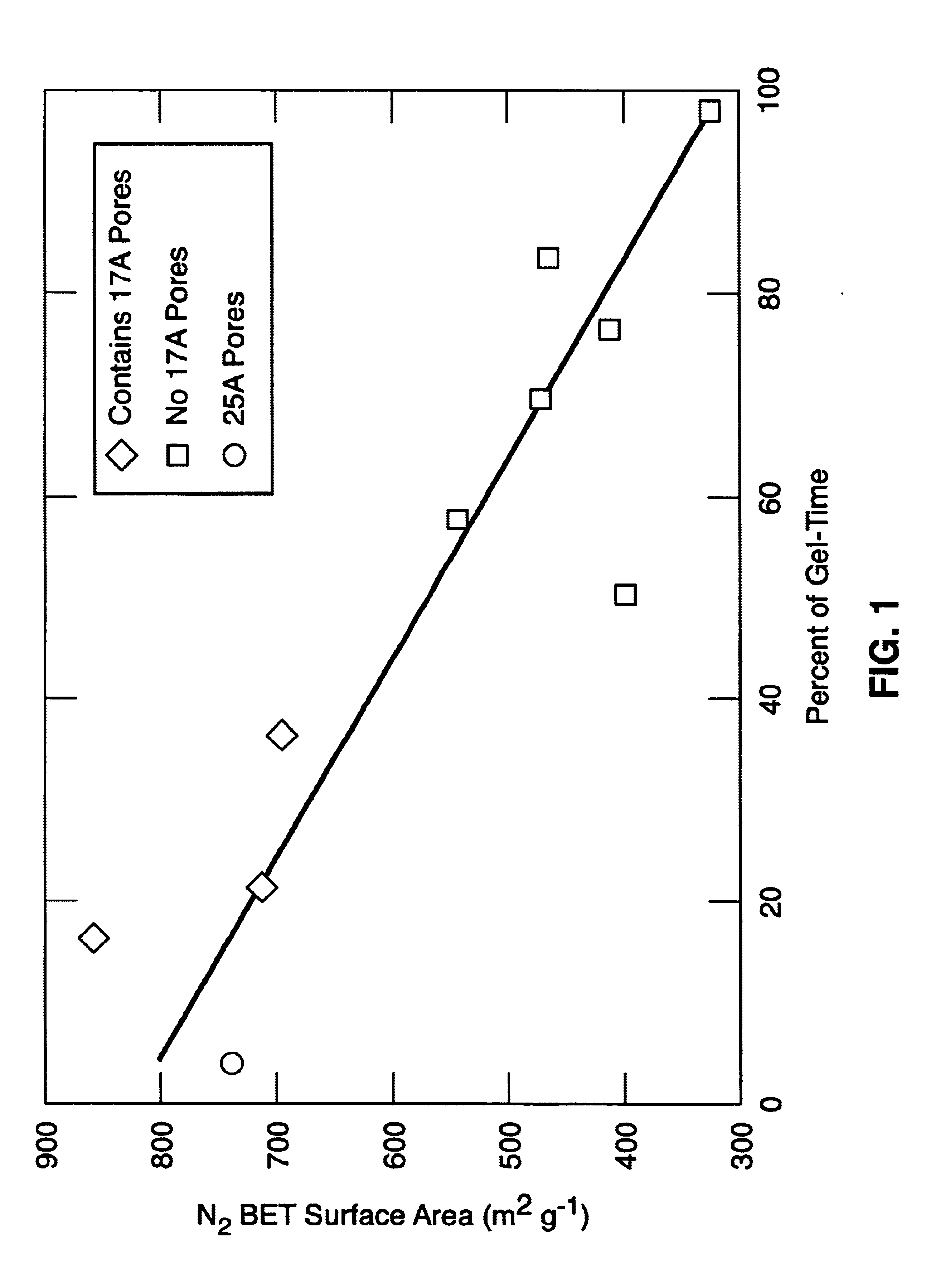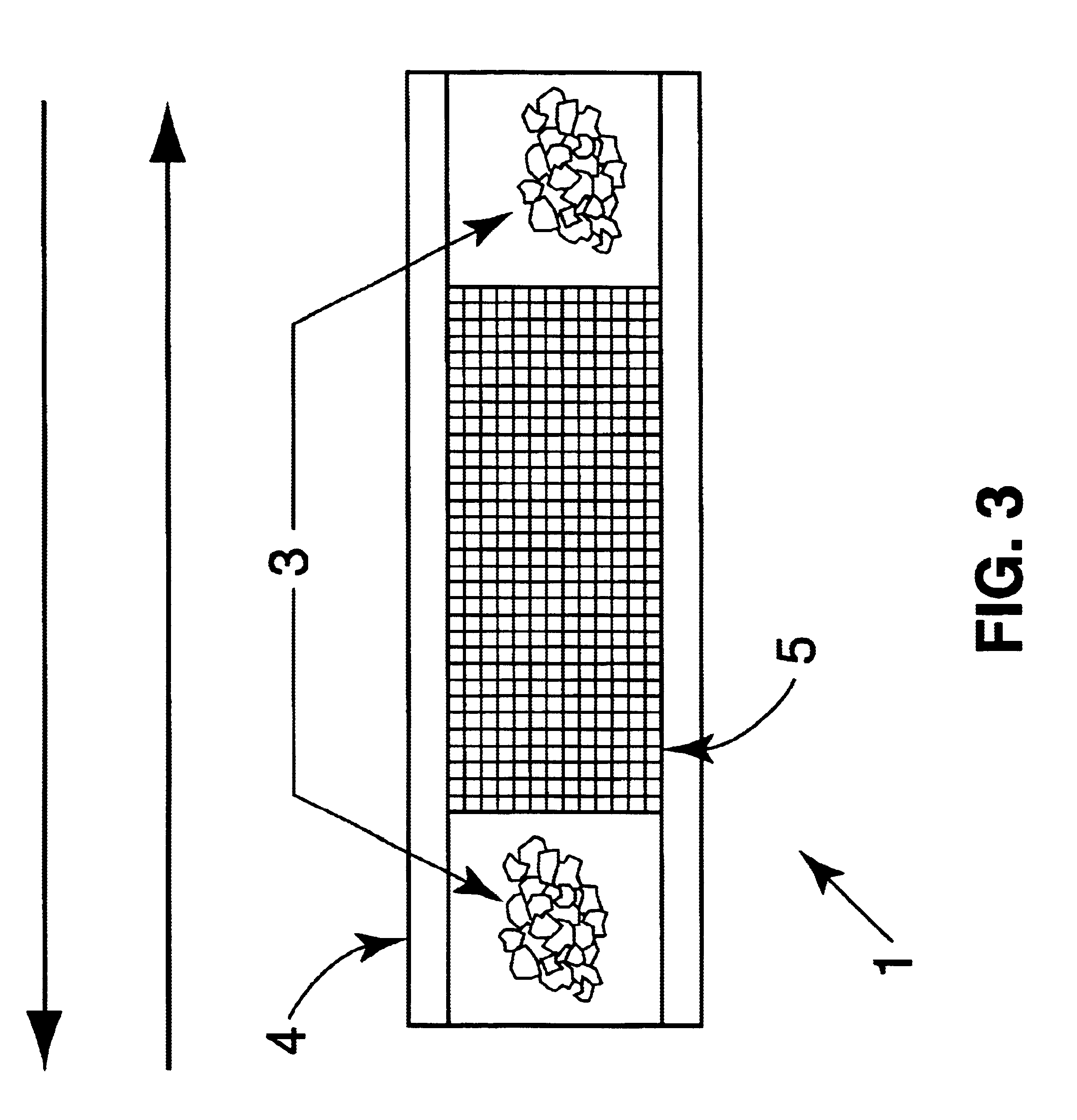Sol-gel derived sorbents
a sorbent and gel technology, applied in the field ofsolgel derived sorbents, can solve the problems of sorbents, poor retention of polar molecules, and more volatile species, and achieve the effect of efficient binding of organic materials
- Summary
- Abstract
- Description
- Claims
- Application Information
AI Technical Summary
Benefits of technology
Problems solved by technology
Method used
Image
Examples
example 2
In a 100 mL beaker, approximately 20 g of tetramethylorthosilicate (TMOS) (Aldrich, Lot #01428PG), was weighed out, then equivalent weight portions of methanol (J T Baker Lot J31262) and water (B&J Lot #BJ309) were added to the beaker.
Then a 250 mL round bottom glass flask with a stir bar was filled with approximately 125 mL of cyclohexane (J T Baker Lot #H08608). The cyclohexane was rapidly stirred and heated in the range of 60.degree. C. to 80.degree. C.
An ammonium hydroxide solution was prepared with deionized water, using 30% ammonium hydroxide (Baker Lot #D15053) to a pH of 11.
Then, approximately 8 drops of the ammonium hydroxide solution (pH 11) was added to the TMOS-methanol-water solution using a standard Pasteur pipette. The mixture was allowed to react at room temperature, stirring occasionally, until a noticeable increase in viscosity had occurred (approximately 7 minutes). At this point, a sol was formed.
The partially reacted mixture of TMOS-methanol-water was added to t...
example 3
The sorbent thus prepared from EXAMPLE 2 was packed (approximately 0.22 g) in a stainless steel tube (6 mm Q.D., 4 mm I.D., 76 mm length) and plugged with silane-treated glass wool to form an active sampling trap. The material was further conditioned by heating the trap to about 350.degree. C. under a flow of helium gas (100 ml / min.). Complete removal of residual methanol required conditioning for 140 hours.
FIG. 3 demonstrates how organics vapors were sorbed onto the trap by passing a volume of gas containing the analytes through the trap at a rate of 200 ml / min. (The trap may be desorbed immediately for analysis or stored at 4.+-.2.degree. C. for analysis at a later time.) Analytes were thermally desorbed from the trap under a reversed flow of helium gas at 350.degree. C. and focused using a cryogenic loop for subsequent gas chromatographic analysis.
FIG. 3 shows an active sampling trap 1 in which the sol-gel sorbent particles 5 are packed in a stainless steel tube 4 and plugged wit...
example 4
Sorbent trap preparation: The sol-gel sorbent used in the present invention was prepared by the method in EXAMPLE 1, the co-polymerization of tetramethylorthosilicate and methyltrimethoxysilane. Sol-gel sorbent traps were prepared in a batch of 10 by loading approximately 70 mg per trap of SG sorbent material into stainless steel tubes (6 mm o.d., 76 mm.times.4 mm i.d.). SG traps were conditioned at 400.degree. C. overnight at a flow rate of 50 to 100 mL min.sup.-1 helium (high purity 99.9999%) per trap. Helium was flowing in the thermal desorption direction.
Explosive vapor sample collection: Dynamic sample collection of the headspace over a smokeless powder was performed in order to demonstrate the validated methodology for the quantitation of explosive components collected by vapor sampling. The arrangement for sample collection involved loading a 4 cm length of 6 mm OD U-shaped glass tubing with Scot Solo 1251 smokeless powder (Scot Powder Co.). The tube was placed in an open top...
PUM
| Property | Measurement | Unit |
|---|---|---|
| temperature | aaaaa | aaaaa |
| diameter | aaaaa | aaaaa |
| pH | aaaaa | aaaaa |
Abstract
Description
Claims
Application Information
 Login to View More
Login to View More - R&D
- Intellectual Property
- Life Sciences
- Materials
- Tech Scout
- Unparalleled Data Quality
- Higher Quality Content
- 60% Fewer Hallucinations
Browse by: Latest US Patents, China's latest patents, Technical Efficacy Thesaurus, Application Domain, Technology Topic, Popular Technical Reports.
© 2025 PatSnap. All rights reserved.Legal|Privacy policy|Modern Slavery Act Transparency Statement|Sitemap|About US| Contact US: help@patsnap.com



